I am working with R. Using a tutorial, I was able to create a statistical model and produce visual plots for some of the outputs:
#load libraries
library(survival)
library(dplyr)
library(ranger)
library(data.table)
library(ggplot2)
#use the built in "lung" data set
#remove missing values (dataset is called "a")
a <- na.omit(lung)
#create id variable
a$ID <- seq_along(a[,1])
#create test set with only the first 3 rows
new <- a[1:3,]
#create a training set by removing first three rows
a <- a[-c(1:3),]
#fit survival model (random survival forest)
r_fit <- ranger(Surv(time,status) ~ age + sex + ph.ecog + ph.karno + pat.karno + meal.cal + wt.loss, data = a, mtry = 4, importance = "permutation", splitrule = "extratrees", verbose = TRUE)
#create new intermediate variables required for the survival curves
death_times <- r_fit$unique.death.times
surv_prob <- data.frame(r_fit$survival)
avg_prob <- sapply(surv_prob, mean)
#use survival model to produce estimated survival curves for the first three observations
pred <- predict(r_fit, new, type = 'response')$survival
pred <- data.table(pred)
colnames(pred) <- as.character(r_fit$unique.death.times)
#plot the results for these 3 patients
plot(r_fit$unique.death.times, pred[1,], type = "l", col = "red")
lines(r_fit$unique.death.times, pred[2,], type = "l", col = "green")
lines(r_fit$unique.death.times, pred[3,], type = "l", col = "blue")
Now, I am trying to convert the above plot into ggplot format (and add 95% confidence intervals):
ggplot(r_fit) + geom_line(aes(x = r_fit$unique.death.times, y = pred[1,], group = 1), color = red) + geom_ribbon(aes(ymin = 0.95 * pred[1,], ymax = - 0.95 * pred[1,]), fill = "red") + geom_line(aes(x = r_fit$unique.death.times, y = pred[2,], group = 1), color = blue) + geom_ribbon(aes(ymin = 0.95 * pred[2,], ymax = - 0.95 * pred[2,]), fill = "blue") + geom_line(aes(x = r_fit$unique.death.times, y = pred[3,], group = 1), color = green) + geom_ribbon(aes(ymin = 0.95 * pred[3,], ymax = - 0.95 * pred[3,]), fill = "green") + theme(axis.text.x = element_text(angle = 90)) + ggtitle("sample graph")
But this produces the following error:
Error: `data` must be a data frame, or other object coercible by `fortify()`, not an S3 object with class ranger
Run `rlang::last_error()` to see where the error occurred.
What is the reason for this error? Can someone please show me how to fix this problem?
Thanks



